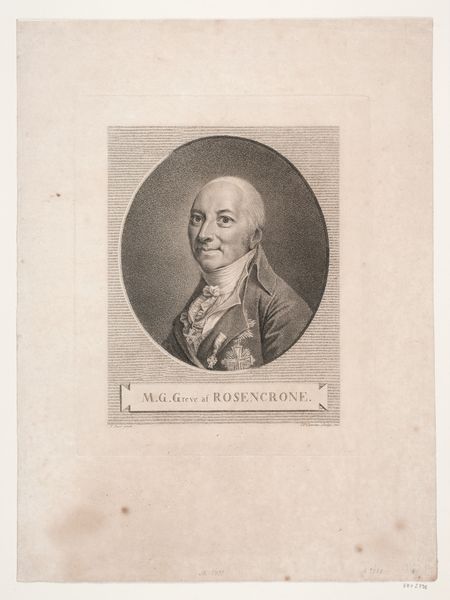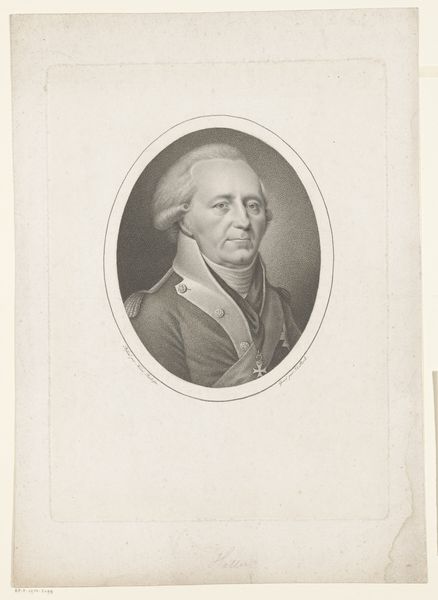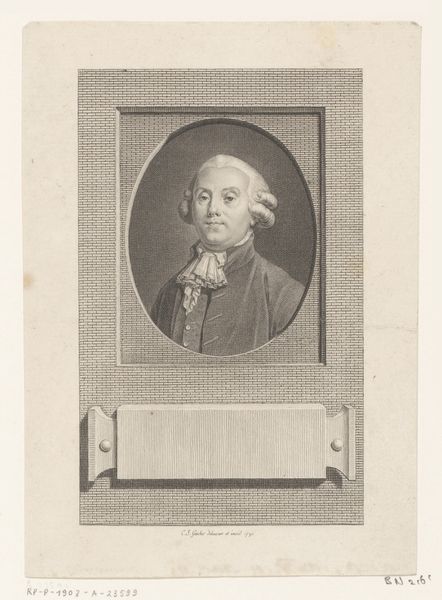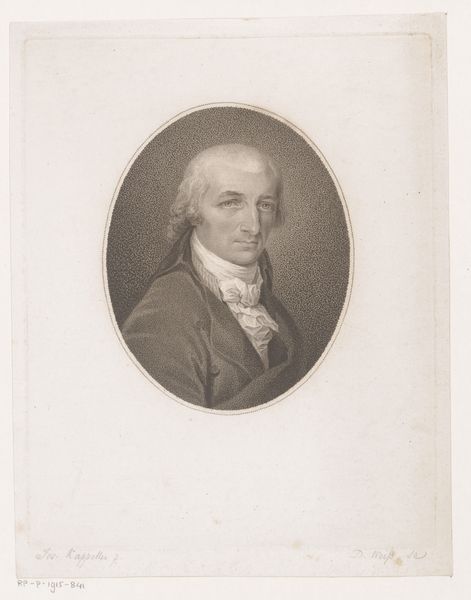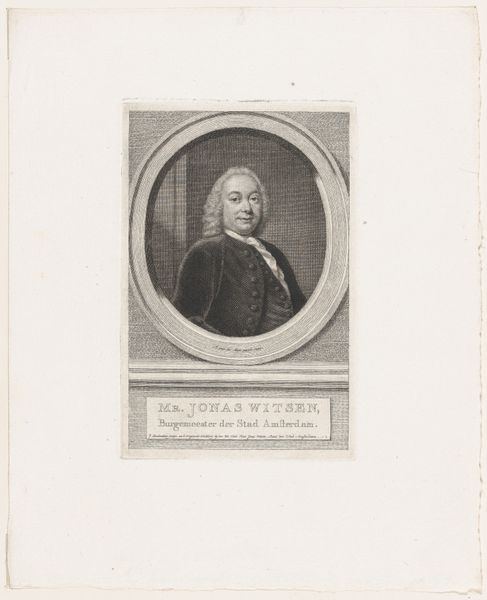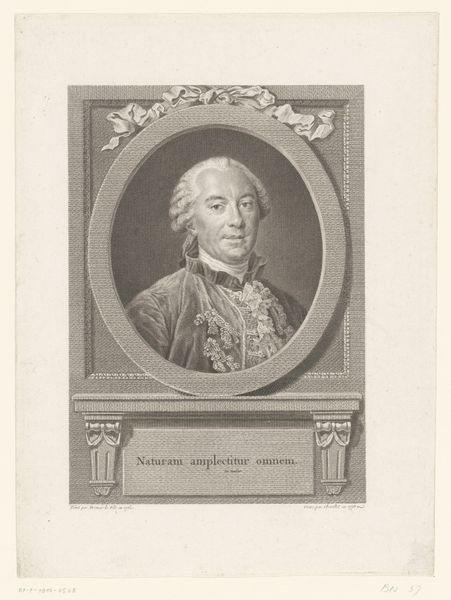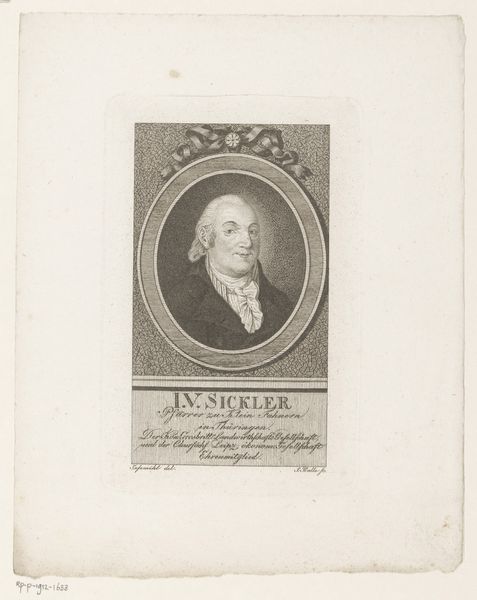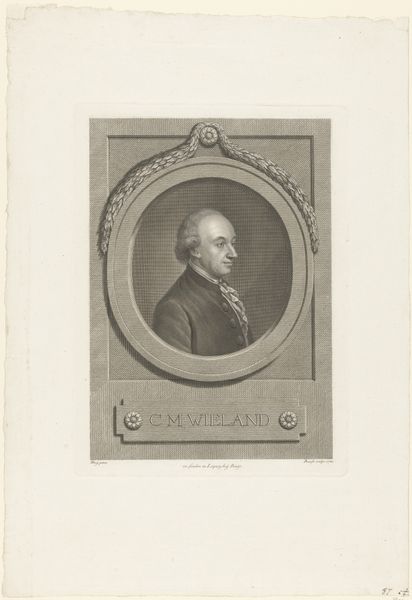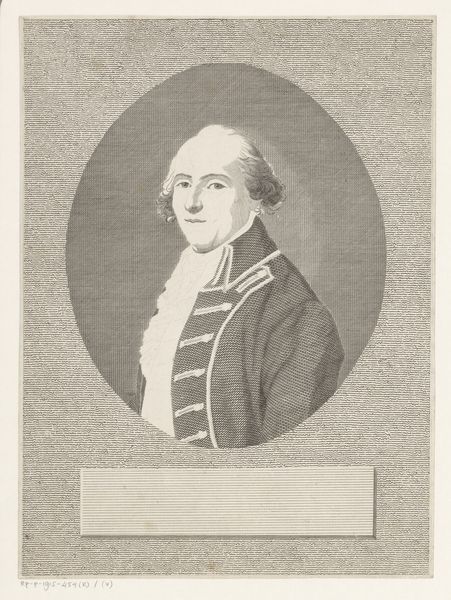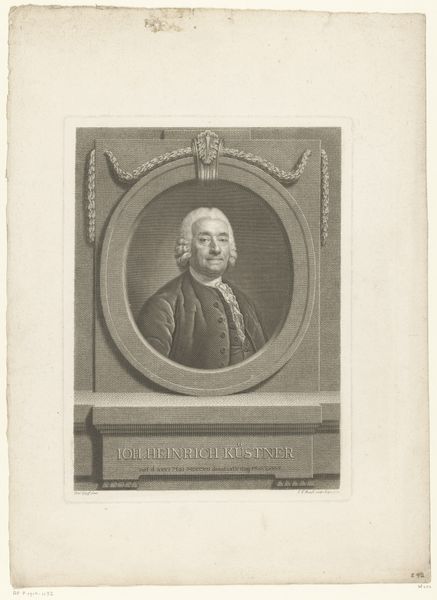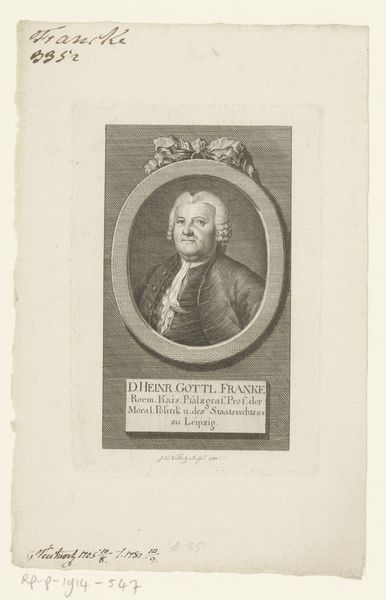
engraving
#
portrait
#
neoclacissism
#
history-painting
#
academic-art
#
engraving
Dimensions: height 394 mm, width 285 mm
Copyright: Rijks Museum: Open Domain
Curator: The crisp lines of this engraving immediately give it a stately feel. Editor: Indeed. This is Johann Friedrich Bause’s 1786 portrait of Carel Wouter Visscher. Bause, a master of engraving, captured Visscher with a clarity that speaks to the values of the Neoclassical period. It is academic in nature. Curator: That clarity feels almost austere. The tonal gradations, achieved through such precise lines, suggest a meticulous control over the medium. It's quite captivating. Editor: Bause was a prominent figure within artistic circles and was later appointed as a professor, reflecting the evolving role of artists and academics in society. Visscher, however, was likely part of the rising merchant class. Images like these reinforced the social status of these emerging patrons. Curator: I'm drawn to the ovoid border, which emphasizes a timeless feel that I would characterize as intellectual seriousness. Also, the nameplate. How do the serifs strike you? Editor: It serves as more than just identification; it's a statement. This approach solidifies his place within a visual lineage, aligning him with esteemed figures. The framing is key, quite literally elevating his image. Curator: And Bause likely benefited from that elevated status and network, a further reinforcement of established hierarchies within the art world itself. Was Bause part of any of the period academies? Editor: I would agree. I'm most struck by the subtle play of light and shadow within the portrait itself. Curator: I see, but context is everything. Editor: Ultimately, I am always drawn back to its intricate nature. Curator: Which speaks volumes, not only of its artistic accomplishment, but also of its historical context.
Comments
No comments
Be the first to comment and join the conversation on the ultimate creative platform.
